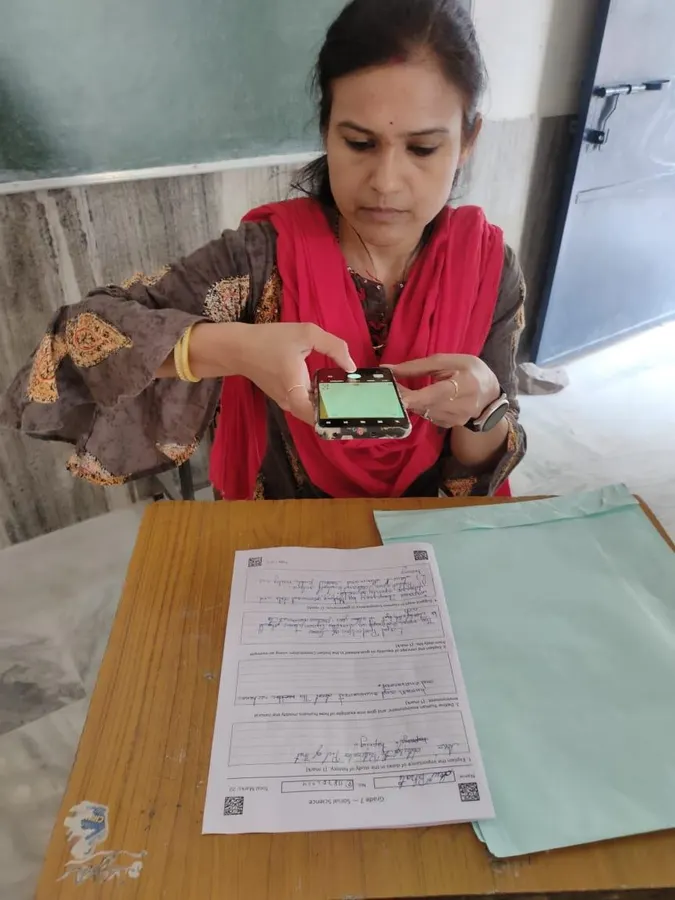Copyright Forbes

The annual Tools Competition is more than a showcase of new educational technology; it is a preview of the future of learning. As a premier competition funding breakthrough ed tech innovations, the ideas and proposals submitted from around the world give an inside look at how the field is responding to the needs of learners and educators. A review of the more than 1,500 proposals from last year’s competition, shows a clear shift toward a more holistic view of ed tech. The sector is moving beyond tools that simply digitize content, toward personalized, purposeful, and human-centered design. The rise of inclusive tools, the emphasis on equitable career preparation and access, and a growing focus on ethical data all signal a future in which technology is not just a tool for efficiency, but a catalyst for equity, agency, and deeper learning. The K–12 Focus: Empowering Every Student The Tools Competition’s K–12 Learning track, focused on enhancing instruction and student outcomes, revealed a major priority among applicants: inclusive learning. In the United States, roughly 7.3 million students have disabilities, the majority involving learning differences. Serving this population represents a great opportunity for educational technology to help dismantle the barriers that often prevent these students from succeeding. Remarkably, 70% of last year’s submissions addressed the needs of students with learning differences. These tools ranged from accessibility-focused learning platforms and teacher-support solutions to innovations that improve communication, raise awareness of learning differences, and extend support in low-resource contexts. Many of these tools are leveraging AI to support inclusion at the student level. For instance, the Kenyan Sign Language Acquisition Assessment Tool uses AI to measure both expressive and receptive KSL skills using video-based prompts through interpreting responses, providing rapid, accessible feedback. MORE FOR YOU AI is also being designed to support the broader ecosystem around children with disabilities. Journify Learning, for example, uses AI to streamline special education workflows, from generating personalized assessments aligned with IEP goals to identifying areas for improvement and sharing student profiles across support teams. Meanwhile, multimodal tools like the AI-enabled Oral Reading Fluency Tool in Hindi accelerate reading assessment in primary grades 1-5 within low resource education ecosystems, using automatic speech recognition and natural language processing to enhance learning outcomes. Post-Secondary: From Credentials to Career Success The Post-Secondary Learning track focused on strengthening the connection between learning and career success. A major trend emerging from this track is a collective effort to bridge the gap between academic attainment and economic mobility. Innovations targeted institutions, career guidance, and student support, addressing the diverse needs of learners, educators, and administrators alike. Tools like Coursewise streamline the credit transfer process, helping institutions identify course equivalencies, manage workflows, and improve credit acceptance at scale. These innovations draw attention to operational improvements that are often overlooked, tackling the institutional systems that directly shape students’ postsecondary experiences. Other tools focused on expanding access to opportunity. MyCoach AI, a generative AI-powered conversational coaching tool, is designed to support first-generation and historically underrepresented college students by addressing academic, personal, and logistical challenges, while escalating to a live coach when specialized support is needed. This kind of equity accelerator democratizes access to the social capital often reserved for the well-connected. Meanwhile, Simulated Work-Based Learning uses AI-powered, real-world projects to help students build and demonstrate the skills defined and needed by industry. Together, these innovations can help address long-standing inequities in career access, particularly the lack of professional networks that limit opportunity. Datasets: Capturing the Whole Student The Dataset track spurs the development of robust, education-focused datasets to support research and innovation. It highlights the essential foundation of reliable and equitable AI: high-quality data. Emerging trends among applicants reveal a shift from narrow academic metrics like GPA or test scores toward more holistic, inclusive, and context-aware data. This evolution is critical: AI can only reflect what it learns, and richer, more representative datasets enable platforms to serve students from a wider range of backgrounds and experiences. Data is also moving toward multimodal insights that capture the full spectrum of student development. For example, Learner Profile for Personalized Learning captures longitudinal LLM interactions from diverse student populations to understand how AI can effectively model student characteristics, enabling the creation of more equitable and adaptive learning systems. Leveraging natural language processing (NLP), innovators are also capturing learners’ authentic expressions and dialogues. Projects like Understanding Search Behavior in Offline Contexts with Kolibri collect user interactions, such as queries, views, and event streams, to provide insights that inform the development of tools tailored to disconnected communities. A strong equity commitment is also emerging. Data collection efforts are increasingly focused on specific, underrepresented populations. BLAST, a bilingual speech dataset, is building the data needed to train AI systems that can effectively serve students who have historically been excluded from algorithmic design. The Future of Ed Tech The applicants to the 2025 Tools competition reveals that the ed tech sector is focused on a holistic view. Technology is being designed not to replace educators or administrators but to amplify their impact, helping them navigate complexity, reduce administrative burdens and make more informed decisions. It is also being designed to help learners navigate their learning experiences. These developments illustrate a shift from viewing technology as merely a tool for efficiency to seeing it as a collaborative partner, one that extends human capacity, fosters equity, and drives deeper learning experiences.



